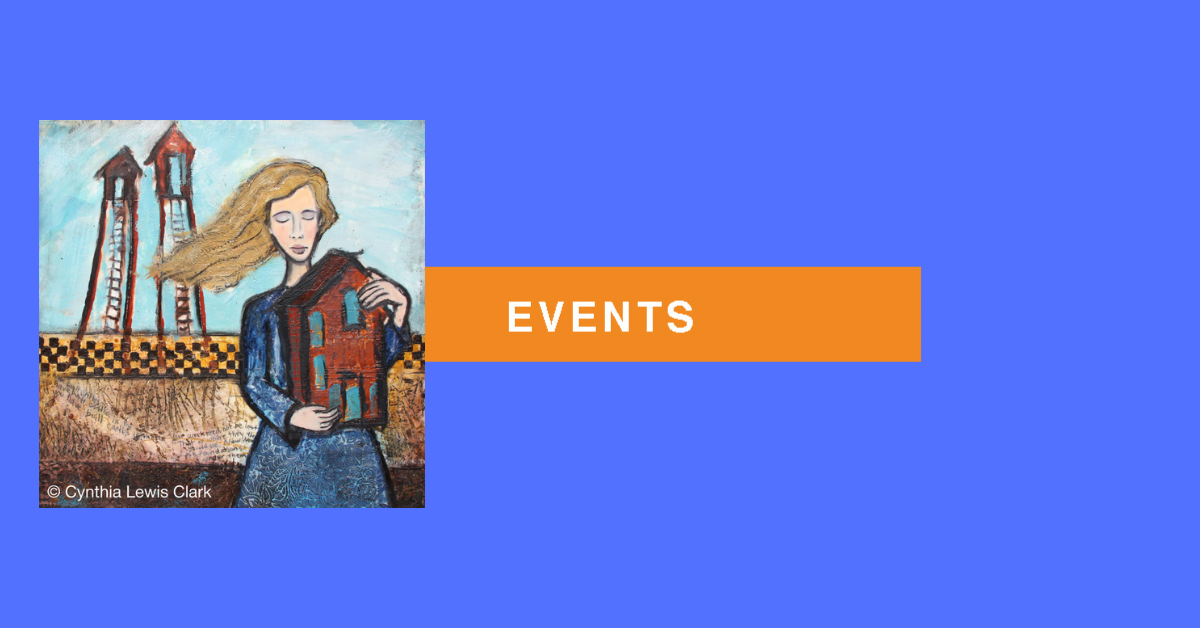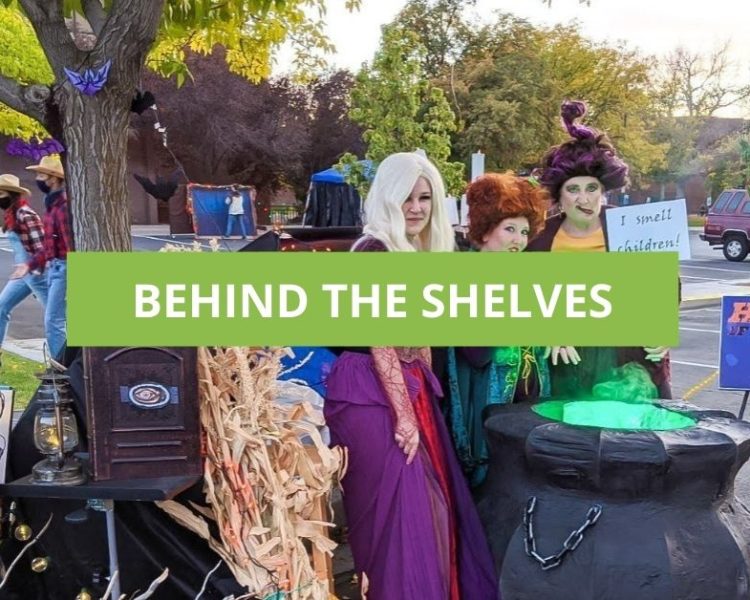Orem Library is pleased to celebrate Women’s History Month with Hooray for Strong Women, an art exhibit of encaustic paintings by local artist Cindy Clark, who is often inspired by the thoughts and emotions of women or literature. Her show will be up through May 13 in the Children’s Wing. Learn more about Cindy’s process through our interview with her below.
When did you decide to become an artist? What struggles did you encounter along the way?
I decided to go to the artist route towards the end of my undergraduate studies. The biggest problems, or worries, At Westmore Elementary in Orem I painted daily with tempera paints, on large sheets of paper at an easel set up in my kindergarten classroom. My teacher, Mrs. Norton, told my mom I was really good in art. My mom was so excited that she bought me art supplies to have at home and always encouraged me in art. In college, I graduated in English and art, thinking I would write and illustrate children’s books. Although I never got around to writing, I had numerous art jobs, including painting signs for the Scera Shell. With young children at home, doing art always involved them. Since the kitchen table was my studio, the kids and I would often have a picnic on the floor. I went back to school to get a teaching certificate, and taught art, mainly at Orem High School, for almost thirty years. I always thought of myself as just a teacher until Jean Irwin took me to Southern Utah and introduced me as “our artist, Cindy Clark.” That was the moment I realized I was an artist
Tell us about a piece that is especially important to you.

My major project is this series of photographs that I have been making over the last 25 years, which is in this Utah Magi or Matriarch? Three Wise Women, is an early encaustic work I created for a Spiritual Religious show at Springville one year. I was thinking of the Three Wise Men and thought that there were probably three wise women somewhere, too. I knew that I had Three Wise Women who loved and supported me, my mom and two grammas. They were strong women of character who overcame adversity, with love and compassion
Which artists are you inspired by?
More than recreating reality, I like art that shares a message, tells a story, or portrays a metaphor or feeling. Poetry inspires a lot of my work. The artist who was most influential and encouraging to me was Katherine Chang Liu who I worked with one summer in Salt Lake. I also really admire Wayne Kimball.
Tell us a little bit about your process for creating a work of art.
These beautiful panels of Native American folk art are located in numerous remote canyons on the Green River and Colorado River drainages. We travel to trailheads with four-wheeled vehicles and then backpack in for several days to make these photographs. Earlier, after a trip, I would spent several days in my wet darkroom developing the film. Now, I do digital images more. I process those images into the memory on my computer. Then I edit carefully and make ar
I sketch an idea, but usually change it during the process of creating. I often use water on encausticbord and draw with wet pastels. Sometimes I add collage elements. When that dries, I add marks with graphite or marker. Then I cover the board with three coats of encaustic medium, fusing with high heat between each layer. Next, I add encaustic paints, oil pastels, litho crayon, incising marks, pan pastels, layer upon layer, fusing with high heat between each layer. A finished painting may have twenty or so layers.
Encaustic paint is made of beeswax and resin, and has been around since the painted ships of Troy or faces painted on ancient sarcophagi in Egypt, so it can stand the test of time. It should not be exposed to heat above 120 degrees or frozen, but other than that it is very durable.
What questions do you hope people ask themselves as they look at your art?
Since people have different life experiences, what does this piece say to you? What message do you get from the work? What does it make you think about?
Since my work is so much about process and layers, can you figure out which layers went on first? What came next? What made the textures? If you could touch it, what would it feel like? (But please don’t touch the art).
What advice do you have for people who are just getting started as artists?
Find a passion and don’t give up. Experiment. Try new things. Enjoy the journey. When something doesn’t work out, rework it.




